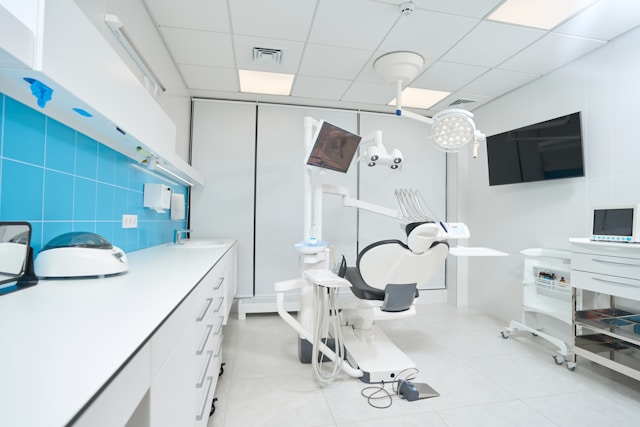What is a mental state examination?
A mental state examination or MSE is used to assess and observe a client's mental state either as part of an initial assessment for the working diagnosis or in a more concise form throughout the treatment process.
There is quite a bit of variation in how the MSE is used in different fields, but it often involves a structured clinical interview and behavioral observations. These can be separated into ten integral aspects, which we'll cover in a moment. A wide range of different healthcare professions utilize mental health examinations, including:
- Psychology
- Psychiatry
- Counseling
- Therapy
- Social work
- Life coaching
- Psychiatric nursing
However, the MSE is different from the mini mental state examination/mini mental status examination (MMSE).
Key components of Mental Status Examination
The Mental State Examination is used by mental health professionals to evaluate a client's current psychological functioning. Let's delve deeper into each component:
Appearance
In the mental status examination, the patient's appearance offers insight into their mental state. When conducting an MSE assessment, it is essential to note:
- Demographics: Age, gender, ethnicity, and religion.
- Clothing type: Appropriateness for the setting; whether the attire reflects their mood.
- Posture: Assess for signs of altered mental status, such as postural instability.
- Gait: Look for any uncoordinated movement or hesitancy.
- Hygiene and self-care: Observe cleanliness and overall self-care.
- Physical health: Ask about pain and biological factors, such as appetite, libido, and energy.
- Substance use: Note any psychoactive substance use and signs of withdrawal.
Behavior
Behavior is another critical aspect of the MSE assessment. Key factors to observe include:
- Gestures: Non-verbal communication cues.
- Mannerisms: Assess for repetitiveness or abnormal behaviors linked to psychiatric disorders.
- Facial expressions: Determine if expressions match the patient's mental status.
- Eye contact: Lack of eye contact may indicate altered mental status.
- Level of arousal: Look for signs of hyperactivity or sluggishness.
Speech
Speech patterns can reveal mild cognitive impairment or more severe psychiatric disorders. During the mental status exam, assess the following:
- Quantity: Is speech minimal or excessive?
- Tone: Listen for monotonous or dull speech.
- Rhythm: Check for fluency or signs of slurred, hesitant speech.
- Rate: Observe the pace of the speech and any pressure or reluctance.
Mood
The clinical definition of mood refers to a sustained emotion, present over a prolonged period, that can significantly impact their subjective perception of the world. In an MSE, mood is considered in two ways:
- Subjectively: By asking the client how they feel. Therefore as reported by the client and observed and noted verbatim within the report by the clinician. Some practical questions to ask would include - How have you been feeling recently? Have you been eating and sleeping normally? How are your energy levels?
- Objectively: This is how we, as clinicians, observe and describe the client's mood. Note its consistency throughout the session: Do they present as irritable, anxious, apathetic, dysthymia, euthymic, or elated? Is it appropriate and congruent with their affect?
Here are some questions to ask patients:
- How are you feeling?
- Have you been feeling discouraged/low recently?
- Have you been feeling energized/excited/elated recently?
- Have you been feeling angry/frustrated/irritable recently?
Affect
Affect differs from mood and focuses on the patient's moment-to-moment emotional responses. Key points to consider include:
- Congruence: Is the affect aligned with mood?
- Range: Limited or wide emotional range?
- Intensity: Observe emotional intensity, whether subdued or exaggerated.
Thoughts
Thought content and form are essential parts of the mental status exam. Assess:
- Form: Coherence and flow of thoughts.
- Content: Look for suicidal ideation, delusions, or obsessive thoughts.
- Stream: Check for signs of altered mental status like thought blocking.
- Possession: Evaluate for feelings of thought manipulation, such as insertion or withdrawal.
Perception
Perception involves how an individual experiences the world through their sensory organs. Key aspects to assess include:
- Sensory modalities: Auditory, visual, olfactory, gustatory, and somatic.
- Perceptual changes: Assess for recent alterations, including delusions or hallucinations.
- Hallucinations: Evaluate for pseudohallucinations and hallucinations across different modalities (tactile, auditory, visual, gustatory, olfactory).
- Concentration: Note any difficulties in concentration or perceptual changes.
- Experiences: Inquire about the nature of perceptual experiences, their impact on the client's environment, and the client's trust in their sensory organs.
- Organic factors: Rule out biological causes such as encephalitis or other organic mental disorders.
- Negative symptoms: Look for symptoms presenting as a lack of something (e.g., the 5 A's: Affect, Apathy, Alogia, Avolition, Anhedonia).
- Sensory impairment: Explore any sensory impairments and their effects on the client's perceptions.
Cognition
Cognition in an MSE assessment is crucial for diagnosing conditions like mild cognitive impairment. It can be evaluated through tools such as the Montreal Cognitive Assessment or Mini Mental State Examination. Key aspects include:
- Orientation: Can the patient recognize who they are, where they are, and the current time?
- Memory: Immediate, short-term, and long-term memory should be tested.
- Visuospatial functioning: Assess with tasks like drawing a clock.
Insight
Insight gauges how well the patient understands their mental status and need for treatment. It's important to assess:
- Awareness: Does the patient recognize their condition?
- Acceptance: Is the patient willing to accept treatment?
Risk assessment and clinical judgment
This final component of the mental status exam focuses on summarizing the findings and assessing any risks. In cases of severe psychiatric disorders or altered mental status, risks may include self-harm or harm to others. The physical examination should be reviewed to rule out any biological causes of cognitive changes.
When is a mental status examination needed?
A Mental Status Examination is a vital tool in assessing a patient's level of psychological functioning and is particularly relevant in various clinical scenarios. Here are key instances when conducting an MSE is essential:
Initial psychiatric assessment
An MSE is typically performed during the initial psychiatric assessment to establish a patient’s cognitive function and mental state baseline. This evaluation informs the diagnostic and statistical manual (DSM) criteria for possible diagnoses.
Changes in behavior or mood
Suppose a patient presents with noticeable behavior, mood, or functioning changes. In that case, an MSE can help determine the underlying causes and severity of these changes, including assessing for any presence of auditory hallucinations or other symptoms related to a psychotic disorder.
Crisis situations
In emergencies, such as suicidal ideation or self-harm, an MSE is crucial for assessing immediate risk and the patient's ability to cope. This assessment is critical when considering a differential diagnosis related to personality disorders or other psychiatric conditions.
Follow-up assessments
Regularly scheduled MSEs can monitor a patient's progress and response to treatment. This includes evaluating the patient's ability to recall immediate information and any changes in thought processes over time.
Medication management
When evaluating the effectiveness of psychiatric medications, an MSE can help identify any side effects or changes in mental status that may require adjustments in treatment, particularly in patients with a history of past psychiatric history.
Referral for specialized care
If a patient exhibits complex symptoms or is suspected of having a psychotic disorder, an MSE can provide valuable insights for referral to specialists, ensuring appropriate care.
Assessing cognitive function
In cases where there are concerns about cognitive decline, an MSE can evaluate a patient's cognitive function, including memory and orientation. Assessing for immediate recall is especially relevant here.
Evaluating thought processes
An MSE can help identify any unreasonable and sustained beliefs or delusions in a patient’s thought process. This is essential for forming a comprehensive understanding of their mental state.
10 questions to ask your clients
The specific questions you ask during a psychiatric evaluation will vary based on your field within mental healthcare. However, here are 10 questions commonly used during mental status examinations that can be adapted to your practice:
- How do you generally feel most of the time?
- What are your strengths? What do you believe you are particularly good at?
- Are there things you feel guilty about?
- Do you believe you need help with the problems you're experiencing?
- What obstacles, if any, are preventing you from achieving your goals?
- Do you have any difficulties you would like assistance with?
- Have you had any psychological treatment interventions in the past? (Consider discussing psychiatric or medical history at this point.)
- What thoughts do you experience when you feel sad or angry?
- What's been on your mind recently?
- What benefits are you hoping to gain from this service?
Extra tips for conducting an MSE
No matter how busy your day is, how stressed you are, and how many clients you have to see that day, remember it could be the worst day of your life. Take a moment to yourself before each session to have a few breaths and ensure you can be completely present for each client.
- Welcome each client warmly and help to put them at ease.
- Be sure to write down your client's words verbatim. Recording sessions to ensure you don't misinterpret them can be helpful if given permission.
- Considering each client's demographics, what is their age and culture, and do you require an interpreter? What else can you do to put them at ease?
- Remember that if you have limited time, always prioritize RISK for every client.


.webp)

.jpg)
.jpg)

.jpg)


.jpg)



.jpg)


.jpg)
.jpg)


.jpg)




